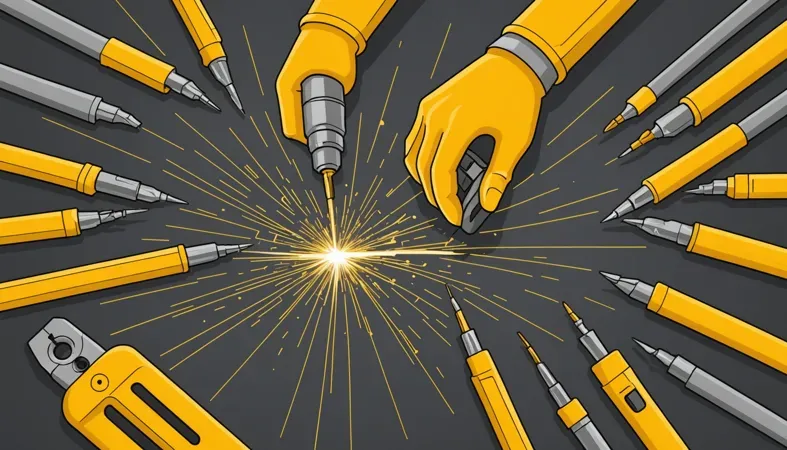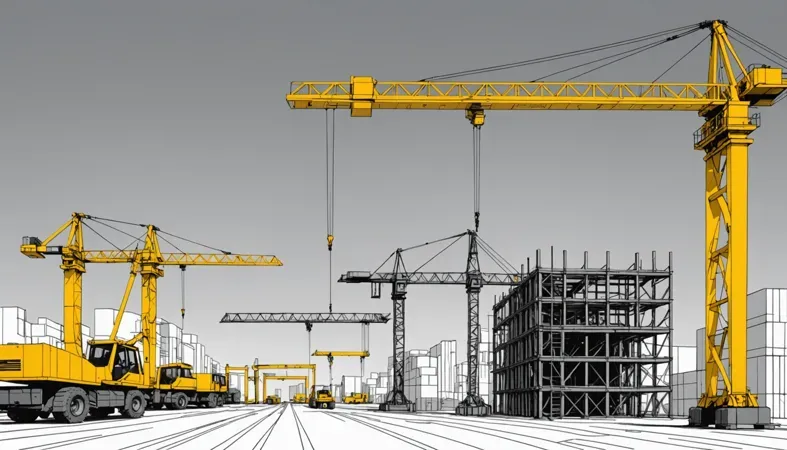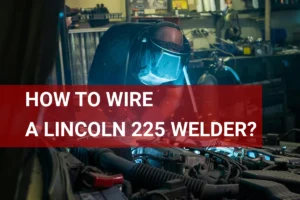What Size Wire for a Welder? Discover Wire Gauge, Selection, and Common Tips
Published on: June 5, 2025 | Last modified: March 4, 2025
By: Tyler James
Wire gauge measures the thickness of wire. Thicker wires can carry more current, while thinner wires handle less.
It’s a question that often arises, what size wire for a welder? Choosing the right size ensures safety and efficiency. I’ve seen projects stall or worse, due to using the wrong gauge—don’t let that happen to you!
In this article, you’ll learn about determining the right wire size needed for welding, how wire gauge works, various types of wire gauge, and important factors influencing wire size selection. We’ll also cover common issues you might encounter, real-world uses, plus tips for aftercare and inspection. You may wonder about the related question: what size extension cord for a 110v welder? We’ve got you covered!
Contents
- What Size Wire is Needed for Welding?
- How Does the Size Of Wire for a Welder Work?
- Types Of Wire Gauge
- Steps to Determine Wire Size
- Factors Influencing Wire Size Selection
- Common Issues You Might Encounter
- Real-world Uses for Wire Size in Welding
- Understanding Wire Size for Different Welding Processes
- What Are the Alternatives to Selecting Wire Size for Welding?
- Frequently Asked Questions (FAQs)
- Conclusion
- References
What Size Wire is Needed for Welding?
You’ll need to choose the right wire gauge for your welder’s power. Typically, a 10 to 14 AWG (American Wire Gauge) is common for 240V welders. Thicker wires deliver better flow, preventing overheating during tough jobs. Exploring what protective eyewear can be used while welding is crucial, and many wonder if prescription glasses are suitable.
How Does the Size Of Wire for a Welder Work?
The size of wire for a welder, known as wire gauge, is crucial for safe operation. Wire gauge defines the wire’s thickness and affects its ability to carry current. For example, a typical MIG welder requires 6-gauge (AWG) wire to handle around 200 amps. The larger the number, the thinner the wire; hence, a 10-gauge wire can only handle about 30 amps.
Using the right gauge ensures your welder runs efficiently and prevents overheating. An insufficient wire size can lead to voltage drop and heat buildup, which may damage both your welder and the materials you’re working with. Knowing your welder’s amp requirements is key to selecting the appropriate wire size.
I can’t stress how important it is to choose the right wire. When wiring extension cords for my Lincoln 225 welder, I found that a thicker wire significantly boosts performance. For a 240-volt welder, a 6-gauge wire is typically needed to maintain efficient power supply, ensuring safe and effective welding.
Types Of Wire Gauge
-
Solid Wire Gauges
Solid wire is common in MIG welding. A 0.030-inch (0.76 Mm) wire size works best for most applications. Consider the material thickness and the welder’s amperage settings when selecting the right size.
-
Flux-cored Wire Gauges
Flux-cored wire provides great penetration without shielding gas. A 0.035-inch (0.89 Mm) gauge is ideal for flat and horizontal welding. Match the size with your welder’s output; thicker materials usually need larger diameters. Knowing the specific meaning behind welding rod numbers can help you choose the right material for precise welding outcomes.
-
Sheet Metal Wire Gauges
Thin wire works well for sheet metal. A wire gauge of 0.023-inch (0.58 Mm) is popular. Consider the metal thickness; lighter sheets typically require thinner wires.
-
Stainless Steel Wire Gauges
Welding stainless steel requires precision. A 0.030-inch (0.76 Mm) size is often recommended. Check your welder’s settings and match them with the material thickness for optimal results.
-
Aluminum Wire Gauges
Aluminum wire is unique due to its softness. The 0.035-inch (0.89 Mm) gauge is suitable for most aluminum applications. Consider the alloy type and the required amperage for the task.
We’ve wrapped up the various wire gauge types here. Let us turn our attention to the steps for determining wire size.
Steps to Determine Wire Size
Let’s go over the steps to find the correct gauge for your welder wire.
-
Identify Your Welder’s Power Requirements
Start by checking your welder’s specifications. Look for the amperage rating, which usually ranges from 20 to 300 amps, depending on the model. For instance, a Lincoln 225 welder typically draws around 30 amps at 240 volts (V). You’ll need this data to calculate the appropriate wire gauge.
Understanding the hazards associated with welding is essential, especially when it comes to protecting yourself from injuries. It is important to know how to treat flash burn in eyes to ensure safety on the job.
Many forget to check the ratings before purchasing wire. Knowing the amperage can save you headaches later when your setup isn’t optimal.
-
Use a Wire Size Chart
Refer to a wire size chart for welding cables. This chart lists wire gauge sizes based on amperage, wire length, and material type. For example, if you’re using a 200 amp welder over a distance of 50 feet (15 Meters), you’ll typically need 2 AWG (American Wire Gauge) copper wire. When observing welding operations from a distance, it is important to understand safety protocols and visibility.
If distance can’t be avoided, you might need a larger gauge to ensure efficient power delivery. Remember, if you use aluminum wire, you’ll need a thicker gauge—consider adjusting by one or two sizes larger.
-
Calculate the Total Length Of the Run
Measure the total distance from the outlet to your welder. Don’t forget to double it if you’re running a two-wire system. If the total distance exceeds 100 feet (30 Meters), consider going up one gauge size to minimize voltage drop. Welders who may be concerned about undergoing medical procedures involving strong magnetic fields can find relevant information on having an MRI with a welder’s equipment.
It’s crucial to get accurate measurements here. A longer run requires larger wire to prevent power loss.
-
Factor in Efficiency Ratings
Consider the efficiency rating of your welder. Some models may work better with thicker wire due to their design and expected workload. For high-duty cycle welding, opt for thicker wires, like 1 AWG or heavier, especially in industrial settings.
This choice can prevent overheating and premature failure of the wire. Spending a bit more on the right size wire can save you expenses in repairs and replacements later.
-
Check Local Codes and Standards
Always check local electrical code requirements, as they can vary by region. Many places dictate specific wiring sizes for certain applications. For example, wiring requirements for a welder might be more stringent than for other devices to ensure safety and proper operation.
It’s vital to comply with these standards for safety and efficiency. Ignoring codes can lead to hazards and penalties.
We covered the steps for determining wire size. We will now cover the factors that influence wire size selection.
Factors Influencing Wire Size Selection
What factors affect your choice of welding wire size?
-
Current Rating
The welder’s current rating is crucial when choosing wire size. For example, a 240V (Volt) welder at 50A (Amps) typically needs at least 6 AWG (American Wire Gauge) wire to handle the load safely. Understanding different welding methods is essential for applying the correct equipment, and further details can be explored in the comprehensive explanation of what seam welding entails.
-
Distance Of Power Source
The distance from your power source affects wire size. Long runs can cause voltage drop, so if you’re over 100 feet (30 Meters), a larger wire like 4 AWG may be necessary.
-
Wire Material Composition
The wire’s material is important. Copper conducts better than aluminum but costs more. Performance can vary significantly based on the type and gauge of wire.
-
Type Of Welding Process
Different processes require different wire sizes. For instance, MIG welding often suits a smaller gauge than stick welding, which needs thicker wires due to higher amperages.
-
Duty Cycle Of the Welder
A welder’s duty cycle indicates how long you can operate before it overheats. If you run a welder with a 30% duty cycle at high amps, you’ll need a thicker wire to prevent overheating and potential hazards.
We have now covered the factors affecting wire size choice. The next section will address common challenges you may face.

Common Issues You Might Encounter
Let’s look at specific problems related to wire gauge.
-
Overheating Of the Wire
Wire gauge affects current flow. If it’s too small, it’ll overheat. Look for burns or discoloration. To resolve this, use the correct gauge; for example, 0.030 inches (0.76 Mm) for typical MIG welding.
-
Inadequate Power Supply
Wire gauge must match power options. It’s crucial to use the right circuit capacity. If underpowered, performance declines. Upgrade to at least 10 AWG for 240-volt welders.
-
Wire Feed Problems
Wire gauge can cause feed issues. If it’s too thick, it can jam. Inspect feed rollers and tension. To fix this, switch to the recommended feeding gauge; 0.035 inches (0.89 Mm) works well for many units.
-
Inconsistent Welding Results
Using the wrong wire gauge can lead to poor penetration or weak bonds. Check for spatter and weak seams. For better control, use a wire gauge specific to your welder—0.045 inches (1.14 Mm) tends to improve reliability.
-
Wire Breakage During Use
If the wire gauge is too thin, it can break easily under stress. Listen for unusual sounds while welding. To fix this, choose the appropriate size for the job; 0.030 inches is common for flux-cored wire. Also, adjust your settings!
We’ve wrapped up common issues you might encounter here. Let us turn our attention to real-world applications of wire size in welding.
Real-world Uses for Wire Size in Welding
I’ve known people to use 0.030 inches (0.762 Mm) wire for MIG welding sheet metal. However, it has many applications, such as:
- Automotive Repairs: 0.035 inches (0.889 Mm) wire is popular for welding car frames and body panels. This size offers good penetration and a clean weld.
- Pipe Fabrication: 1/16 inches (1.588 Mm) flux-cored wire works well for thicker stainless steel pipes. It’s reliable and widely accepted for outdoor work.
- Home Projects: 0.024 inches (0.609 Mm) wire is ideal for DIY welding at home. It’s perfect for thin materials and small, intricate jobs.
- Heavy Machinery: 0.045 inches (1.143 Mm) wire is used in industrial settings to weld thick structural steel. This size ensures strong, durable joints that meet strict codes.
Understanding Wire Size for Different Welding Processes
Different welding processes require specific wire sizes to function optimally. Let’s break it down.
| Welding Process | Ideal Wire Size (AWG) | Common Use Cases |
|---|---|---|
| MIG Welding | 0.030 – 0.035 (0.76 – 0.89 Mm) | General fabrication, automotive work |
| Flux-Cored Arc Welding | 0.035 – 0.045 (0.89 – 1.14 Mm) | Outdoor welding, thicker materials |
| TIG Welding | 0.040 – 0.045 (1.02 – 1.14 Mm) | Thin-walled sections, precision work |
| Stick Welding | 1/8 – 3/16 (3.2 – 4.76 Mm) | Heavy construction, structural steel |
| Submerged Arc Welding | 0.045 – 3/16 (1.14 – 4.76 Mm) | Large structural components, industrial projects |
Key Considerations
- Material Type: Different materials, like steel, aluminum, or stainless steel, may require changes in wire size.
- Thickness: Thicker materials typically demand larger wire sizes to ensure strong welds.
- Welding Position: Some positions may require adjustments in wire size for effective welding.

What Are the Alternatives to Selecting Wire Size for Welding?
There are several methods to achieve effective welding without focusing solely on wire gauge. For instance, consider using welding machines that automatically adjust settings based on your material type, like the Miller Multimatic 215. If you often work with varying thicknesses, a spool gun, such as the Lincoln Electric Magnum 100L, can provide better results without needing to change wire size frequently. If there’s one thing I’ve gained from my journey, it’s that convenience and efficiency can often trump complexity.
Another option is experimenting with different welding techniques. Using flux-cored wire, for example, can reduce dependence on wire dimension, allowing for better penetration on thicker materials. Brands like Hobart and Lincoln offer alternatives that fit diverse needs. Just keep in mind, the choice of technique and product can significantly influence your final result, regardless of the wire size!
Frequently Asked Questions (FAQs)
Now let us look at some questions I typically get asked about welding wire size and other related topics.
What Size Extension Cord for a 110V Welder?
You’ll need a 12-gauge (AWG) extension cord for a 110V welder. A 12-gauge cord can handle up to 20 amps safely, which is enough for most light-duty welding projects. If you’re using a longer cord (Over 50 Ft or 15 M), consider going up to a 10-gauge to minimize voltage drop.
What Size Wire for Lincoln 225 Welder?
You should use 6-gauge (AWG) wire for a Lincoln 225 welder. This welder typically draws around 30 amps at 230 volts. Using the correct wire prevents heating and ensures efficient operation, especially for long distances. To further ensure your safety while working with welding equipment, you can explore techniques to prevent cancer from welding.
What Size Wire for a 240 Volt Welder?
A 6-gauge (AWG) wire is generally required for a 240 volt welder. This wire size can safely carry up to 55 amps. Choosing the right wire helps maintain safe operation and reduce equipment damage.
What Size Wire Do I Need for Welding Leads?
For welding leads, you’re looking at 2-gauge (AWG) wire for most applications. This size can handle high current, usually up to 150 amps, ensuring your welding setup runs efficiently. Using a lower gauge can reduce resistance and improve performance.
What Gauge Wire for a 200 Amp Welder?
For a 200 amp welder, you’ll need 2-gauge (AWG) wire. At this amperage, it’s critical to pick the right gauge to prevent overheating and ensure optimal performance. This wire can effectively accommodate the high power demand without significant losses.
Conclusion
That brings us to the end of our discussion on what size wire for a welder. We covered essential points like wire size determination, wire gauge types, factors affecting selection, common welding issues, aftercare, and real-world uses. Don’t forget about alternatives and our FAQs for quick clarification.
So, what size wire do you need for a welder? Simply put, it often depends on the voltage and your welder type. For example, a 240V welder typically requires 10-gauge wire (5.26 Mm²), while a Lincoln 225 welder often uses 8-gauge (8.37 Mm²) to ensure optimal performance. Choosing the right wire size means avoiding potential issues and ensuring efficiency.
If you want to deepen your understanding of welding, be sure to check out What is Welding for further insights.
References
- American Welding Society. (2015). AWS D1.1/D1.1M: Structural Welding Code – Steel. Miami, FL: AWS.
- Canadian Welding Bureau (CWB): https://www.cwbgroup.org
Tyler is a passionate DIY welder and self-taught metal artist with years of hands-on experience transforming raw materials into functional and artistic creations. Specializing in MIG welding, Tyler crafts everything from custom furniture to outdoor sculptures, blending creativity with technical skill. Committed to making welding accessible, Tyler shares practical insights and project inspiration to help beginners and hobbyists confidently explore the world of metalworking.
American Welding Society, Electrical Codes, MIG Welding, Voltage Drop, Welder Power Requirements, Welding, Welding Equipment, Welding Safety, Wire Gauge, Wire Size Selection







